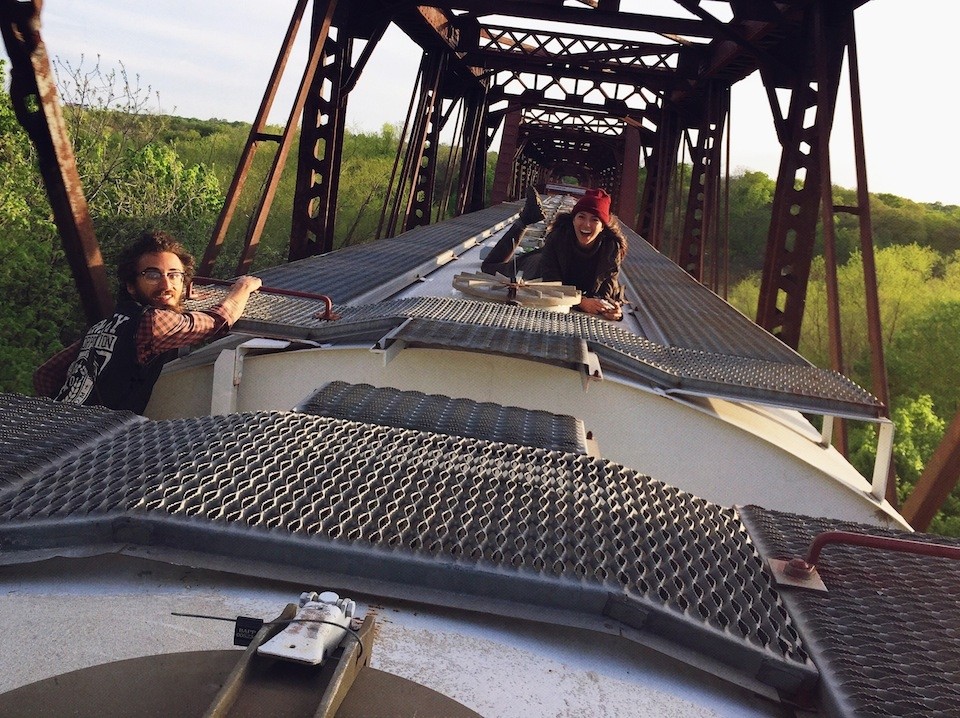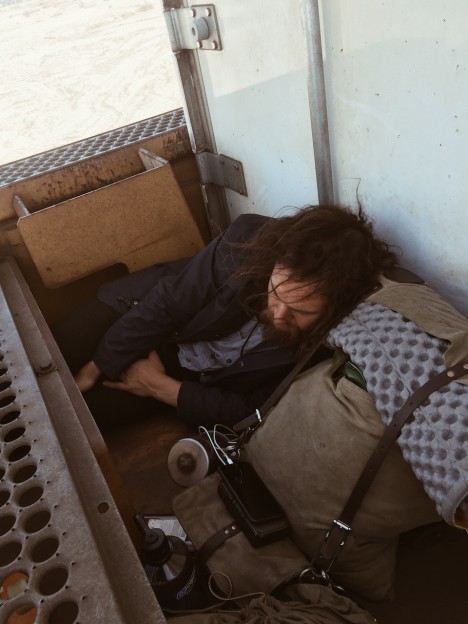Traveling light takes on new meaning when jumping trains, as does the limited battery life of mobile devices – just like the rest of us, hitchhikers and train hoppers these days increasingly see the web as as invaluable resource. The underlying story of nomadic life on the rails is surprisingly consistent in some ways: people, generally young, using the nation’s railways to travel the country. The details are, however, revealingly different – analog hobo codes have given way to digital hobo coders.
Like many 30-somethings, Huck has experienced life with and without a pervasive internet that answers all questions. This transitional generation knows to rely on conventional knowledge and hard research as much as spoon-fed answers. In the extended interview below, this reddit user (/u/huckstah) and long-time /r/vagabond participant shares stories from his nomadic lifestyle. Images here by Molly Steele illustrate some of the everyday wonders of illicit train travel as well. Per Hobos of Instagram , these travelers are trading their flip phones for iPhones, starting Instagram accounts … and bringing an age-old tradition of trainhopping and tramping into the Information Age.”
Online resources provide help in all kinds of ways, including some websites dedicated to helping the (often intentionally) homeless and misfit travelers as they hitchhike or dumpster dive. At the same time, there are many ways to also turn ordinary resources toward new ends, like using Google Maps to scout the layouts of train yards for security gaps and best access points.
Beyond transit, maps are also helpful for finding public restrooms, camp grounds, power outlets, showers and other essentials. Kindles (or other devices using less power than phones) are critical to stretching battery life, too. Ultimately, the information flows both ways: travelers turn around and share their adventures on Instagram, Vine, Facebook and other social media sites.
Those on the road more often than not find themselves looking for remote digital work or seasonal employment, again aided in part by websites like Craigslist and otherwise. YouTube videos help guide people through various processes of actually getting on and off trains, as well as finding the best boxcars on (or in) which to travel. Of course, none of these reduce the real, physical-world risks and dangers associated with train hopping, including but not limited to injury and arrest. Some naturally worry that the spread of this form of transit to the internet will increasingly lure people who are not equipped for the lifestyle to try things better off watched on Vimeo or read on reddit.


